2014 年北京普通高中会考英语真题及答案
一、听力理解 (共 20 小题,20 分。每小题 1 分)
第一节:听下面八段对话或独白,从各题 A、B、C 三个选项中, 选出能回答问题的最佳答案。每段
对话或独白你将听两遍。
听下面一段对话,回答第 1 题。
1. What will the man put on each desk?
A
B
C
听下面一段对话,回答第 2 题。
2. How will the boy go to his piano lesson?
A. By bus
B. By taxi.
C. On foot.
听下面一段对话,回答第 3 题。
3. Where's the woman going on holiday this year?
A. France.
B. Canada.
C. Italy
听下面一段对话,回答第 4 题至第 5 题。
4. What was the woman's grandfather's job?
A. A doctor
B. A driver
C. A fireman.
5. What does the man want to do?
A. Visit the woman.
B. Work in a children's hospital.
C. Meet the woman's grandfather.
听下面一段对话,回答第 6 题至第 7 题。
6. Where does this conversation probably take place?
A. At a bus stop.
B. In a train station.
C. At an
airport
7. What's the woman doing?
A. Making a telephone call.
B. Asking the way.
C. Shopping.
听下面一段对话,回答第 8 题至第 10 题。
8. What part-time job does the woman do?
A. A shop assistant.
B. A bicycle trainer.
C. A manager
9. Why does the woman need the job?
A. To get more clothes
B. To buy a new bike
C. To support her
family.
10. What does the woman think of her part-time job?
A. Boring.
B. Difficult.
C. Enjoyable.
听下面一段对话,回答第 11 题至第 13 题。
11. Why was the man absent from school?
�
A. He was ill.
B. He moved house.
C. He was on holiday.
12. What will the woman do this Saturday?
A. See a doctor.
B. Go swimming.
C. Have a lesson
13. When will the woman visit the man?
A. This evening.
B. Tomorrow evening.
C. During the school holiday.
听下面一段独白,回答第 14 题至第 16 题。
14. What's the main purpose of this announcement?
A. To collect litter.
B. To ask for donations.
C. To help homeless people.
15. What's the special need this winter?
A. Small children's toys
B. Warm hats and gloves.
C. TV sets and computers.
16. When will the truck be in the area?
A. On the 2nd.
B. On the 7th.
C. On the 11th.
第二节:听下面一段独白,根据题目要求在答题卡相应题号后的横线上写下第 17 题至第 20 题的关
键信息。此段独白你将听两遍。
二、单项填空 (共 15 小题,15 分。每小题 1 分)
Memo
Name
(17) Lee
Age
23
Length of time in Australia
a year and a half
Present address
Flat 1,
(18)
Forest Road, Canterbury, 2036
Present course
the History of Western
(19)
Time to move in
this
(20)
, 10 January
�
从各题 A、B、C、D 四个选项中,选出可以填入空白处的最佳答案。
21. Of the two coats, I'd choose the ______ one to spare some money for something else.
A. cheaper
C. more expensive
B. cheapest .
D. most expensive
22. ---Have you shown him around the museum yet?
---Yes. We ______ a great time there.
A. had had
C. have had
B. have
D. had
23. Mrs. Miles is not rich enough, _______ she has donated much to help the needy.
A. so
C. or
B. yet
D. for
24. It is one thing to enjoy listening to good music, but it is quite ______ to perform
skillfully yourself.
A. other
C. some
B. another
D. any
25. When ______ about his new job, Philip said he was crazy about it.
A. having asked
C. to be asked
B. asking
D. asked
26. ---Let's organize ____ surprise party for grandma's 70th birthday.
---That's _____ good idea. We can invite several of her friends.
A. a; a
C. a; 不填
B. the; a
D. the; 不填
27. Susan rides her bicycle to work every day. This is _____ she keeps fit.
A. what
C. how
B. which
D. when
28. ---It's a difficult decision.
---Yes. It requires a lot of thinking, so let's go and talk about it _____ a drink.
A. for
C. over
B. from
D. to
29. ---Oh, would you like to attend a concert or see a film this evening?
---I can't go anywhere because I _____ a very important phone call.
A. expect
C. expected
B. am expecting
D. was expecting
30. ---Remember: the first one _____ the top of the mountain wins the prize.
---Got it.
�
A. to have reached
C. reached
B. to reach
D. reach
31. Before the sales start, my mum usually makes a list of _____ we need for the coming
season.
A. why
C. how
B. which
D. what
32. ---Will you go to Lily's birthday party?
---Of course. Everyone in our class ______.
A. has been invited
C. had been invited
B. has invited
D. had invited
33. Several songs of the band become major hits. No matter ______ they go, they are sure
to receive a warm welcome.
A. where
C. whom
B. why
D. what
34. ---Here're the ten tickets you've booked.
---Only ten tickets? There _____ be twelve.
A. can
C. should
B. would
D. must
35. She remembers several moments in the past ______ she experienced a similar feeling.
A. which
C. that
B. where
D. when
way back home, we stopped at a service area for food.
三、完形填空 (共 15 小题,15 分。每小题 1 分)
阅读下面短文,从各题 A、B、C、D 四个选项中,选出可以填入空白处的最佳答案。
Service Area Sweets
This past holiday season, I drove with my parents to Boston to visit my distant cousin.
On my way back home, we stopped at a service area for food.
As we stopped there, there was this old lady who was busy
36
chairs as people were leaving, making sure everything was
thought of gifting her with five dollars and a chocolate in my pocket. I
napkin(纸巾): "Thank you and Merry Xmas."
37
all the tables and
and clean. I just
38
on a paper
decided to walk up to her and give her.
I had wanted to leave it there for her
She asked me, "Is it a gift? Only
I nodded, "Yes," and
"Thank you," she replied, and I left to buy some
at her.
39
40
41
will I take it."
42
from the store inside. On
my way back to the car, the woman stopped me.
"I
43
a lot of cookies and candies on Christmas for people," she explained. "Would
you like to have some?"
A bit taken aback, I replied. "Yes."
She asked me to
44
, and came back carrying a four-inch plate filled with
different cookies and chocolates! My first expression was a big smile.
"That's a lot," I said, a bit surprised.
She smiled and told me that she made eighty to ninety of these plates every year, to
to friends and others.
45
�
I had no words or thoughts in my brain. Finally, I asked if I could hug her. We hugged,
, I felt as if
wishing each other a happy and healthy holiday season. Then, as we
I had met a new friend with whom I
the gift of a smile and some happiness.
46
47
There is a(n)
48
to the joy of giving and receiving. From either
49
, both
B. cleaning
B. quiet
50
.
C. fixing
C. simple
C. wrote
D. painting
D. free
D. noticed
B. smiled
B. marked
B. and
B. there
the giver and receiver are always
36. A. lending
37. A. neat
38. A. explained
39. A. or
40. A. here
41. A. shouted
42. A. food
43. A. wanted
44. A. wait
45. A. return
46. A. concluded
47. A. exchanged
48. A. attitude
49. A. level
50. A. generous
B. eat
B. gift
B. oil
B. bought
B. communicated
B. shared
B. limit
B. end
B. caring
C. but
D. so
C. now
C. waved
D. then
D. stared
C. paper
D. cloth
C. collected
C. choose
C. sell
C. realized
C. compared
C. depth
C. step
C. thoughtful
D. made
D. pay
D. show
D. parted
D. presented
D. belief
D. point
D. happy
四、阅读理解 (共 15 小题,30 分。每小题 2 分)
第一节:阅读下面短文,从各题 A、B、C、D 四个选项中选出最佳答案。
A
AMAZING TIME
Holiday Homes
The adventure of a lifetime, this spring,
Nobody knows North America like Holiday
through Malaysia
Homes…
The challenge and satisfaction of raising
Adventure Holidays in small groups
money for HEALTHCARE’S work
Phone 0190 055 9621 NOW
Horseback Riding, Mountain Biking,
Forest Camping, National Park and much
for more information
more…
Just waiting to be discovered!
0195 256 7553
�
Freedom Line
DISCOVER
Sailing activity holidays for 6 to 14
Small group discovery holidays in Egypt
years-olds in Australia
Cultural tours, discovery journeys,
Call for more information
wildness
0600 382 9450
adventures by bus, riverboat, hot-air
54 Worcester Road,
Evesham WR2 6RP
balloon,
camel, on foot…
Adventure Travel, London N10 5SR
0181 990 0005(24hrs)
51. Which country can you go to with HEALTHCARE?
A. Malaysia.
C. Australia.
B. Canada.
D. Egypt.
52. If David wants to visit America, which number can he call?
A. 0190 055 9621.
C. 0600 382 9450.
B. 0195 256 7553.
D. 0181 990 0005.
53. Which advertisement aims for children?
A. AMAZING TIME.
C. Freedom Line.
B. Holiday Homes.
D. DISCOVER.
54. What are these four advertisements mainly about?
A. Exciting jobs.
C. Fun journeys.
B. After-school courses.
D. Interesting clubs.
B
Adopt-a-Highway
Hello. I'm Jan from Mrs. Lake's class. My class wants to work together to help the
public. We think we have found a great way to do this. Last month we did a class project
on the highways near our town. We learned about the Adopt-a-Highway Program. This program
brings people together to pick up litter along the roads. We think it would be a great
idea for all students in our school to join the program and adopt a highway.
Adopting a highway is not like adopting a pet. When a highway is adopted, only part
of the highway is cared for by a group of people. The group agrees to work every week to
keep its part of the highway clean. Each group gets its own sign that has the name of the
group printed on it. The sign is put up at the side of the road. This sign lets drivers
know who is keeping that area of the road clean.
The Adopt-a-Highway Program is a great way for people to help their environment look
nicer. Also, the government does not have to send out as many road workers. This saves
money. Finally, people may try harder to keep roads clean if they see people, especially
teenagers like us, cleaning them up.
We will need helpers to care for our adopted highway. If you want to feel great and
keep our roads clean, please come with your parents to the meeting next week. We will meet
�
in Mrs. Lake’s room on Wednesday at 6:00 P.M. At the meeting, we will talk about which
roads are the dirtiest as a result of people's unkind acts. Then we’ll try to pick an
area to adopt and clean up.
I look forward to seeing you at the meeting. Remember to keep our roads clean!
55. What is the Adopt-a-Highway Program about?
A. Giving names to the highways.
C. Picking up litter along the roads.
B. Drawing pictures of highways.
D. Putting up signs near the roads.
56. The Adopt-a-Highway Program can help____.
A. provide jobs
C. control traffic
B. build highways
D. save money
57. What should the students do first if they want to join the program?
A. Go to a meeting next Wednesday.
C. Write a letter to their parents.
B. Call Mrs. Lake next week.
D. Pick a spot to care for.
58. What is the purpose of this speech?
A. To introduce the traffic system.
B. To tell a story about adopting a pet.
C. To show drivers how to drive safely.
D. To encourage students to join the program.
C
Like detectives, archaeologists use evidence to solve mysteries. Detectives look for
clues to solve crimes. Archaeologists seek clues to help them understand how people lived
long ago. In fact, the word "archaeology" means "the study of ancient things." One type
of evidence used to learn about the past is pottery. When examining pottery, archaeologists
consider not only its appearance but what it was made of and how it was made. With this
knowledge, they can gain interesting information about people’s lives in times past.
Pottery is made by first adding water to a kind of soil called clay. When wet, clay
can be formed into shapes. It is then heated, which hardens the clay and allows it to keep
its shape. There are various kinds of clay soil. Many types of clay contain iron. Iron
gives the heated clay a reddish color. Some ancient potters tried to change this color
by adding other materials, such as charcoal and oil to make their pottery black. Others
made pot surfaces blue by adding copper.
To make clay easier to shape and heat potters use something called "temper." Various
materials can be used as temper. These materials include sand, crushed stone, and plant
fibers. An archaeologist can tell where a pot came from by the types of clay and temper
that were used. Sometimes a pot found in one location might contain materials from another
place. This can provide clues about how people traded or traveled.
Some of the earliest pots were made quite simply. A lump of clay was hollowed(挖
空) out and shaped into a bowl. It was then heated at a low temperature. The finished
pot was rough, and often undecorated. This type of pot may have been used for cooking.
Later, coiled pots were made. These were made by first rolling the clay into a long
snake shape. The coil was then wound in circles, around and upward to form a pot. The lines
of the coils were smoothed out with pieces of cloth or leather and shaped into many different
objects, like pitchers and drinking vessels. They were often decorated in various ways.
These pots were heated at high temperatures. The higher the temperature, the harder and
�
longer-lasting the pot. Further improvements in pottery-making developed at different
times and places. These included wheels,
fancier decorations, and better kilns(窑).
A pot's shape and decoration can provide clues about the past. Painted pictures might
show events from daily life. Archaeologists know certain shapes and styles that were common
in different times and places.
Archaeologists study the differences in types of pottery closely. Because of their
work, these everyday objects can reveal some of the mysteries of the past.
59. Archaeologists study pottery to find ________.
A. the original way of making pottery
B. how decoration styles changed
C. the development of pottery
D. what early life was like
60. This passage gives us the information about pottery EXCEPT its ________.
A. value
C. design
B technique
D. material
61. Which of the following is the order of steps for making coiled pots?
a. add temper
b. heat the pot in a kiln
c. add water to the clay
d. shape the clay into a pot
e. hollow out a lump of clay
f. roll the clay into a long piece
A. c. a, b, d
B. c, f, d. b
D. a, e, f, b
62. Which is the best title for the passage?
C. e, a. b, d
A. Important Evidences
C. Dating back in History
B. Digging up the Past
D. Historians and Ancient Pots
第二节:阅读下面短文和问题,根据短文内容和每小题后的具体要求,在答题卡相应题号后的横线
上写下相关信息,完成对该问题的回答。答语要意思清楚,结构正确,书写工整。
Last month I got the chance to take part in an underwater research project in an area
of the Gulf of Mexico called the Flower Gardens. A team of professional researchers, led
by the scientist Dr. Matt Phillips, was trying to learn more about the fish and other
creatures that live in this part of the sea. The Flower Gardens are a long way from the
shore and we spent three days on a boat.
The team used a piece of underwater equipment called a Remotely Operated Vehicle (ROV)
to collect information. The ROV could measure water depth and temperature and it also had
a camera that sent live film back to the boat. The ROV was great fun. It was controlled
by a computer on the boat, and I was allowed to operate it a few times.
However, the thing I enjoyed most was diving into the water. At first, I was quite
frightened -- mainly because I couldn't see land in any direction. But as soon as I jumped
into the water, I wasn't afraid anymore. It was amazing to see the colourful fish swimming
around and I could see all the way to the Flower Gardens, which are almost 30 metres down.
�
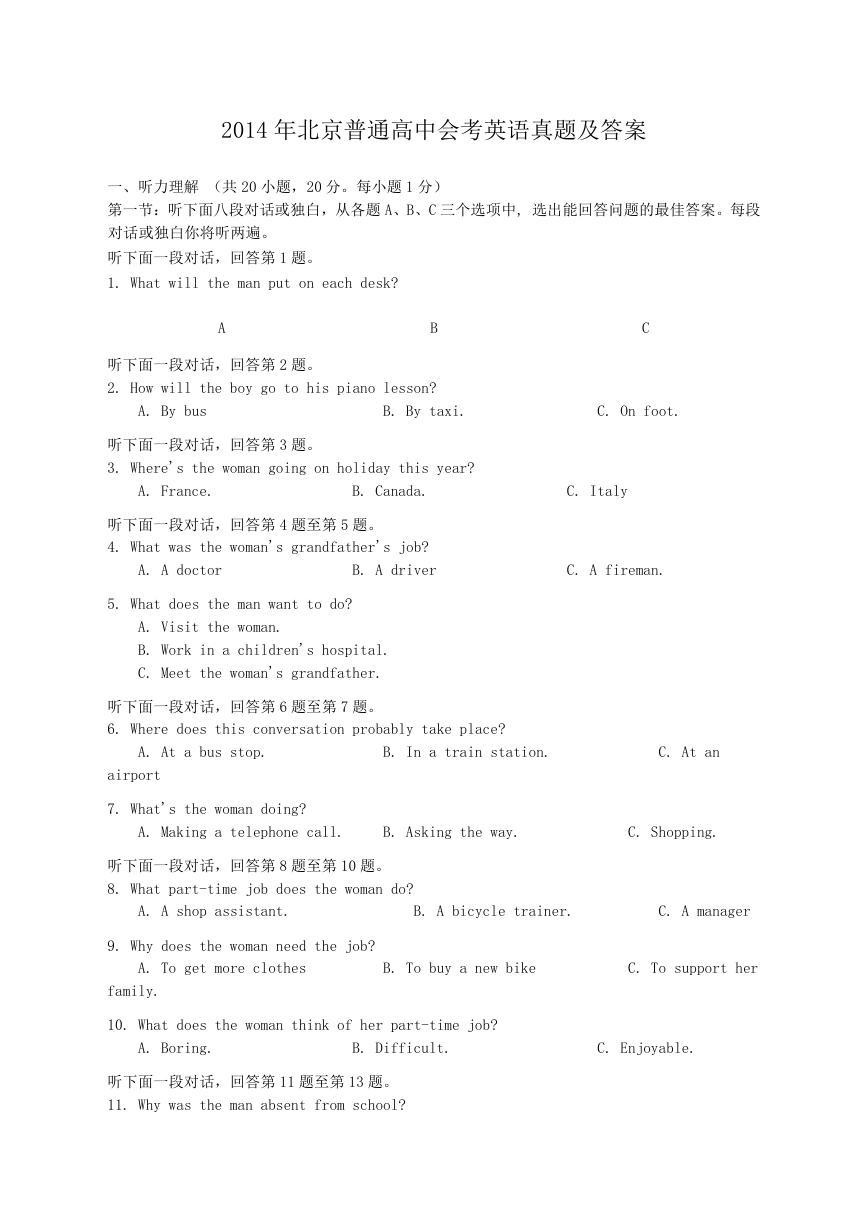
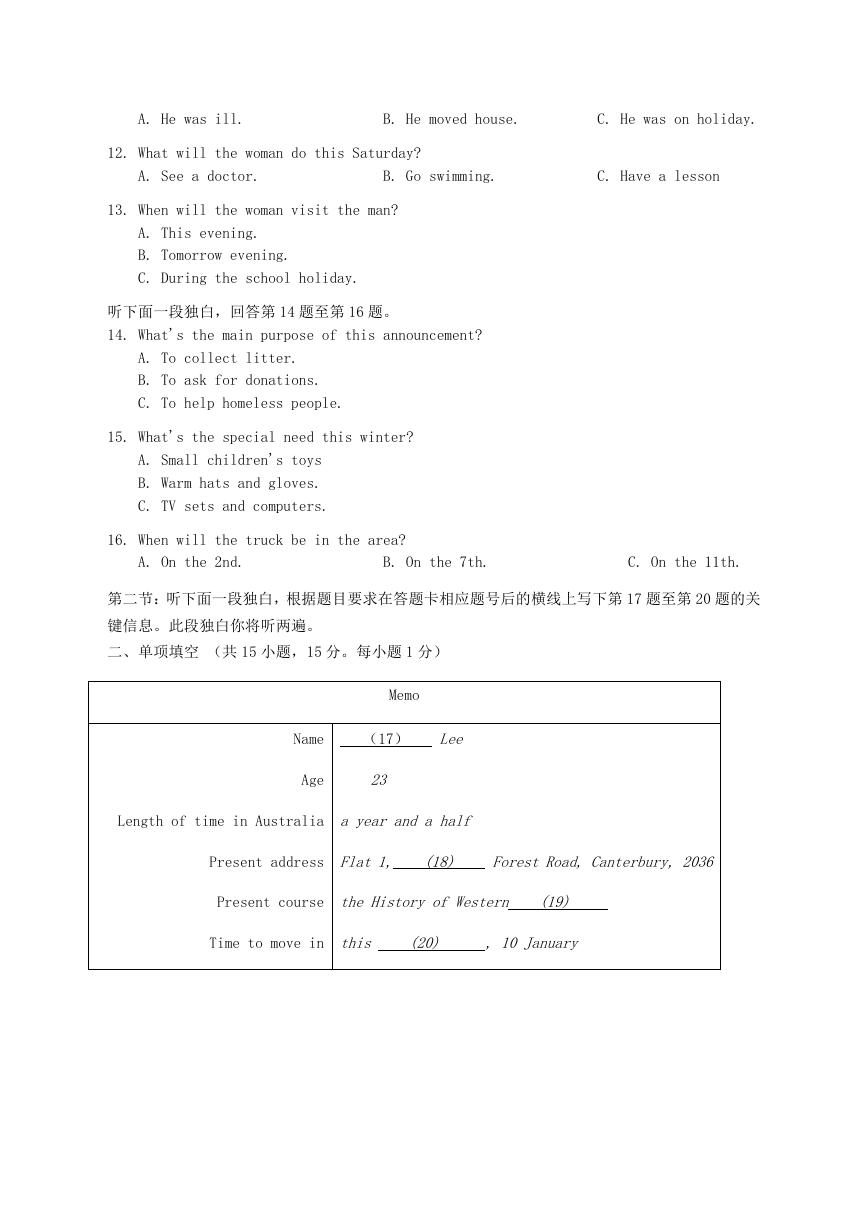
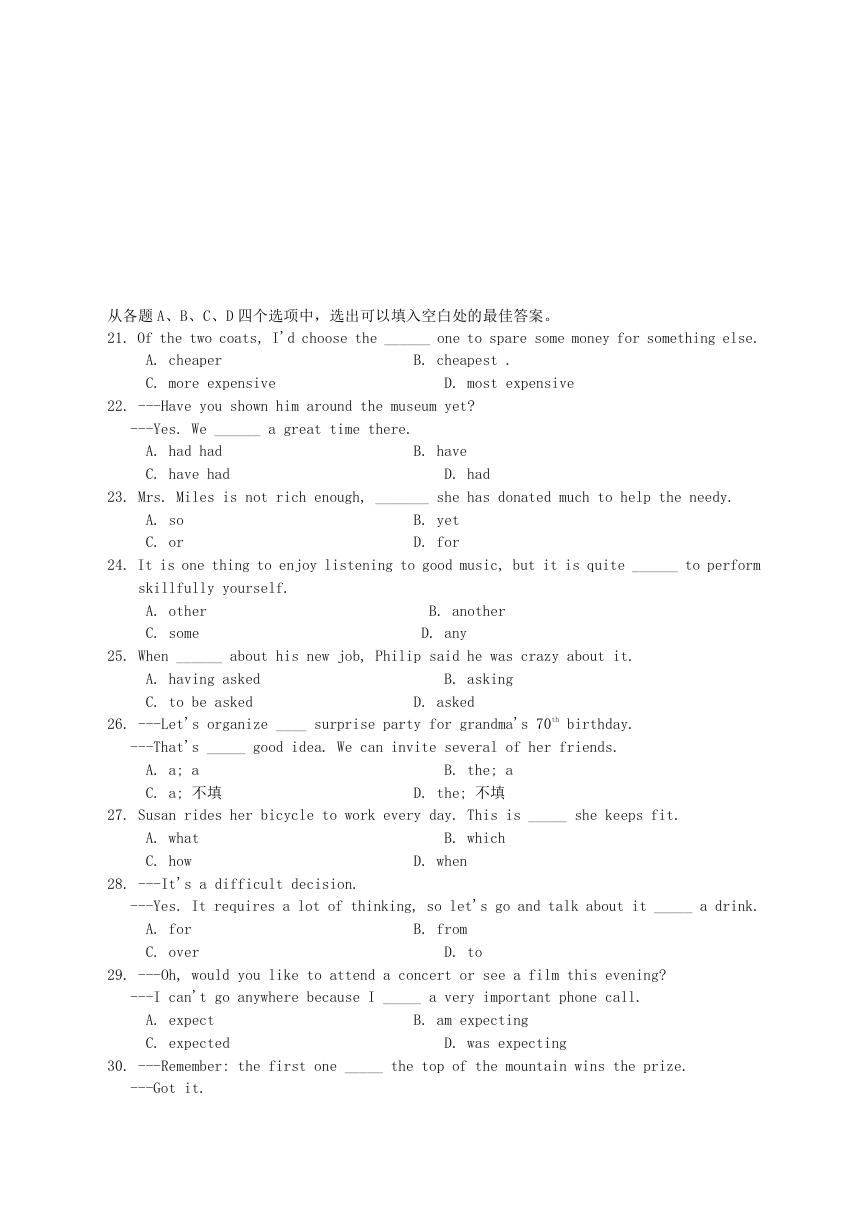
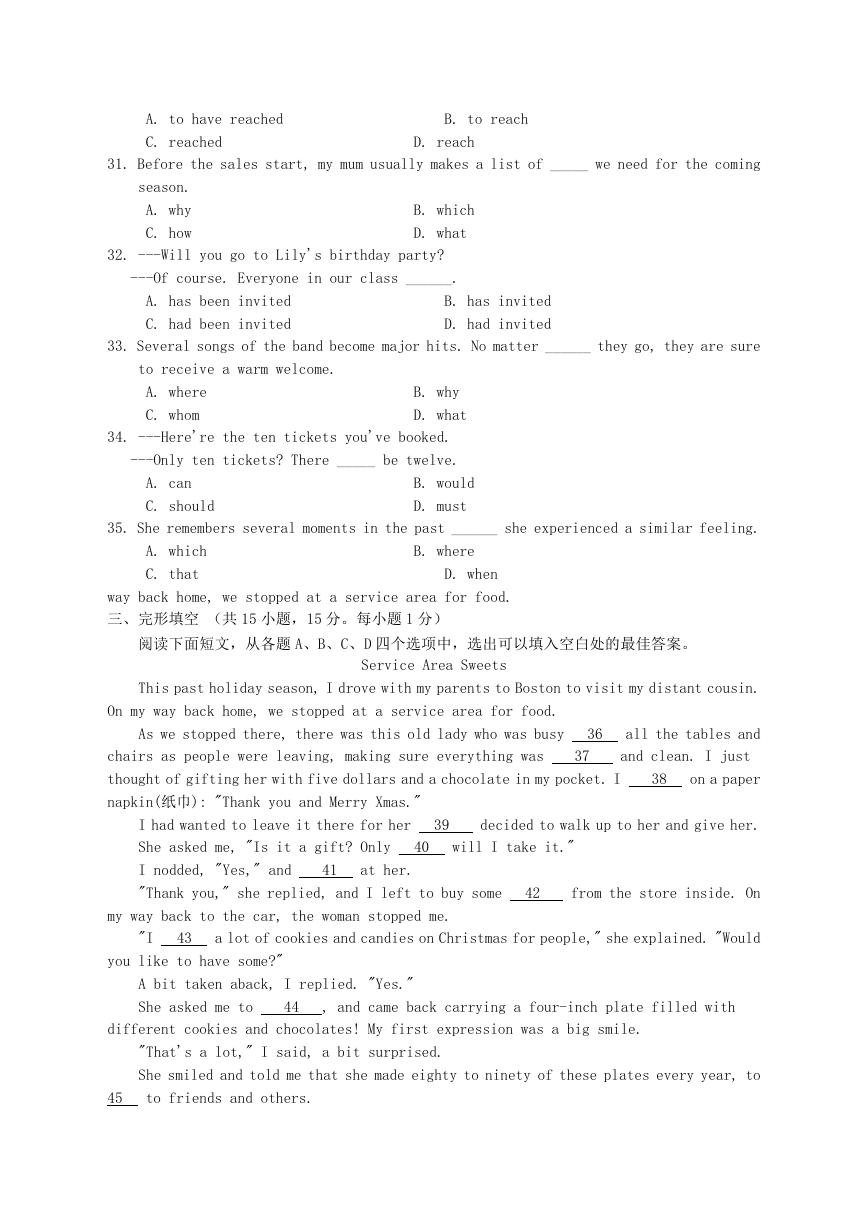
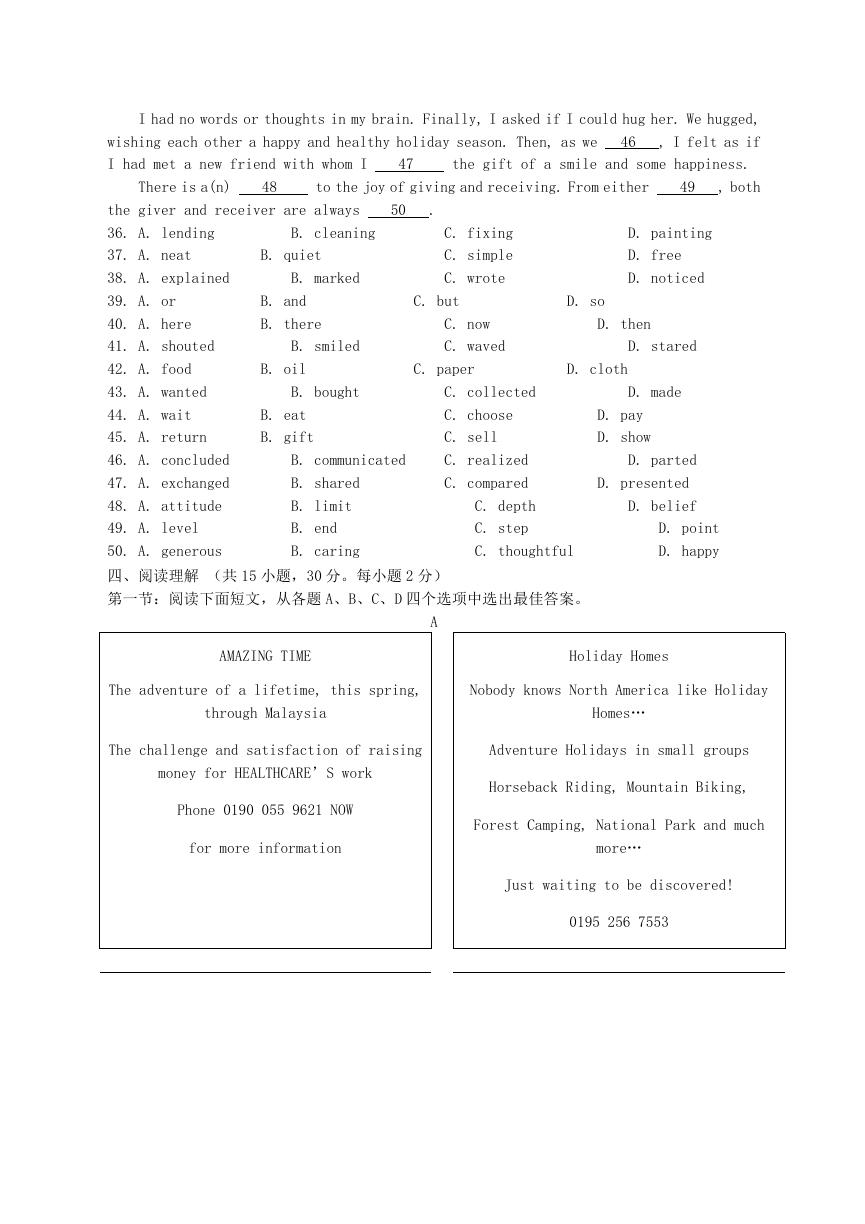
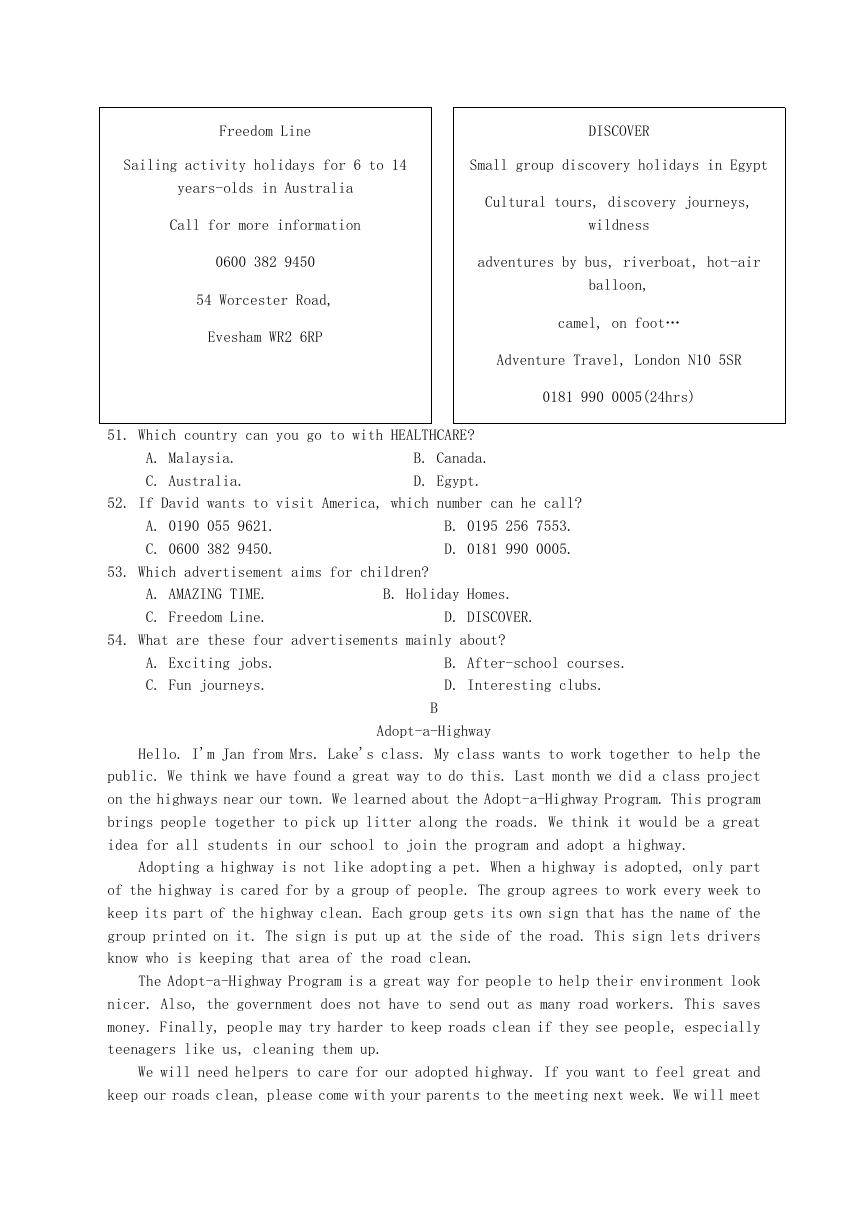
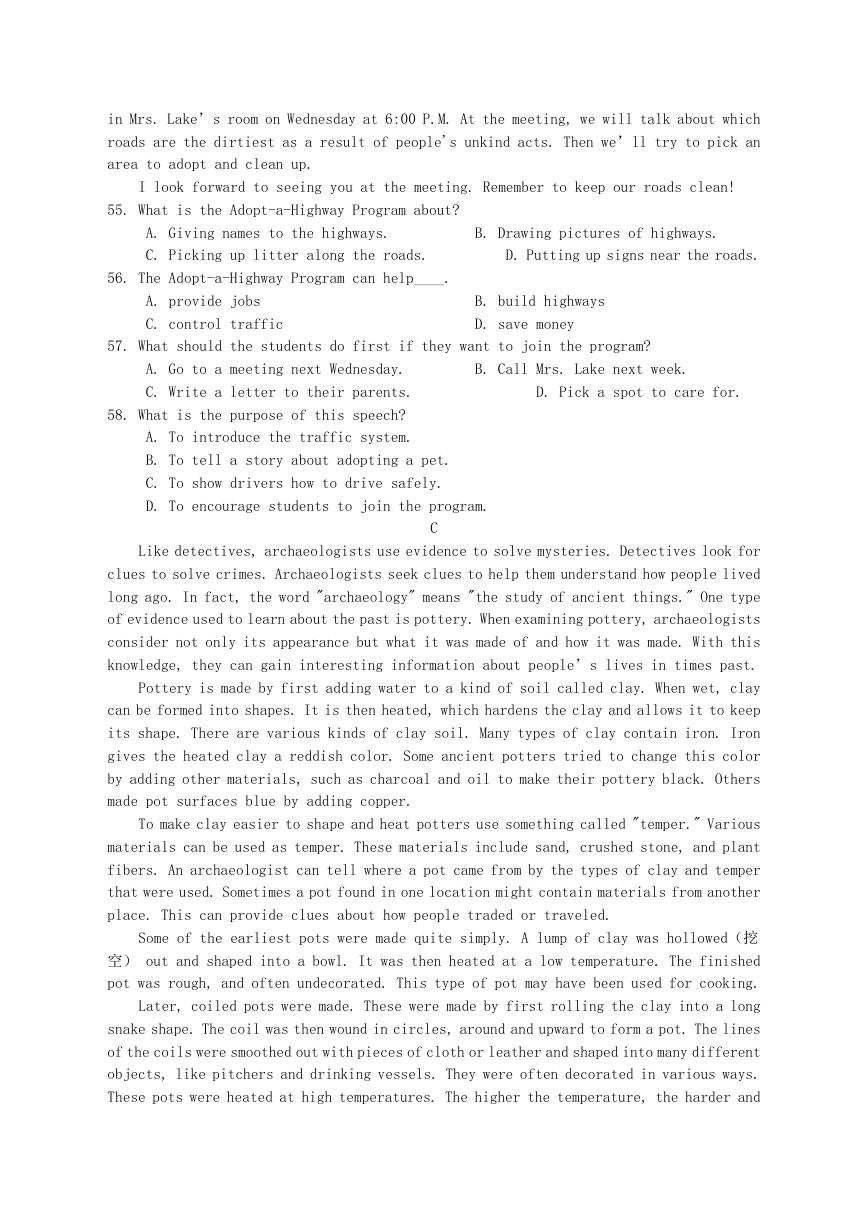
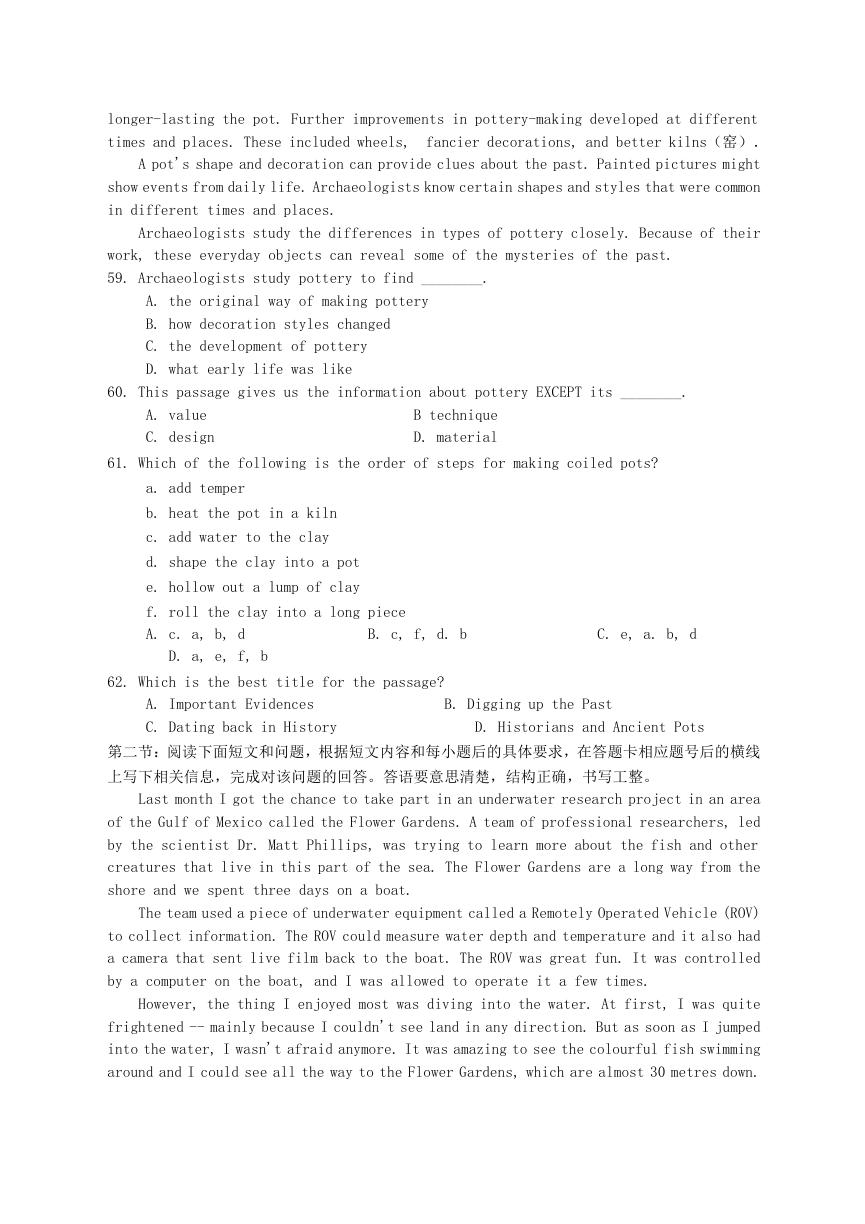








 2023年江西萍乡中考道德与法治真题及答案.doc
2023年江西萍乡中考道德与法治真题及答案.doc 2012年重庆南川中考生物真题及答案.doc
2012年重庆南川中考生物真题及答案.doc 2013年江西师范大学地理学综合及文艺理论基础考研真题.doc
2013年江西师范大学地理学综合及文艺理论基础考研真题.doc 2020年四川甘孜小升初语文真题及答案I卷.doc
2020年四川甘孜小升初语文真题及答案I卷.doc 2020年注册岩土工程师专业基础考试真题及答案.doc
2020年注册岩土工程师专业基础考试真题及答案.doc 2023-2024学年福建省厦门市九年级上学期数学月考试题及答案.doc
2023-2024学年福建省厦门市九年级上学期数学月考试题及答案.doc 2021-2022学年辽宁省沈阳市大东区九年级上学期语文期末试题及答案.doc
2021-2022学年辽宁省沈阳市大东区九年级上学期语文期末试题及答案.doc 2022-2023学年北京东城区初三第一学期物理期末试卷及答案.doc
2022-2023学年北京东城区初三第一学期物理期末试卷及答案.doc 2018上半年江西教师资格初中地理学科知识与教学能力真题及答案.doc
2018上半年江西教师资格初中地理学科知识与教学能力真题及答案.doc 2012年河北国家公务员申论考试真题及答案-省级.doc
2012年河北国家公务员申论考试真题及答案-省级.doc 2020-2021学年江苏省扬州市江都区邵樊片九年级上学期数学第一次质量检测试题及答案.doc
2020-2021学年江苏省扬州市江都区邵樊片九年级上学期数学第一次质量检测试题及答案.doc 2022下半年黑龙江教师资格证中学综合素质真题及答案.doc
2022下半年黑龙江教师资格证中学综合素质真题及答案.doc